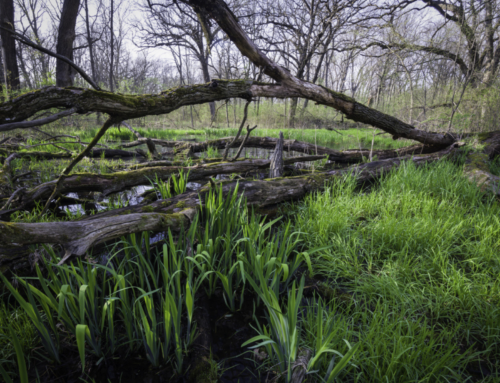March 21, 2016
Secretary Matthew A. Beaton
EOEEA, Attn: MEPA Office
Purvi Patel, EEA No. 15384
100 Cambridge Street, Suite 900
Boston, MA 02114
Subject: Notice of Project Change for EEA# 15384
Former Springfield Gas Works CT River Remediation Project
Dear Secretary Beaton,
I am submitting comments on the Notice of Project Change (NPC) for the former Springfield Gas Works Connecticut River Remediation Project on behalf of the Connecticut River Watershed Council (CRC). CRC is the principal nonprofit environmental advocate for protection, restoration, and sustainable use of the Connecticut River and its watershed. We submitted comments on the original Environmental Notification Form (ENF) on June 26, 2015. This project is located directly in the Connecticut River in Springfield, and is therefore of interest to us. The project proponent is Columbia Gas of Massachusetts.
When we commented in June of 2015, the project met a threshold for requiring an environmental impact report (EIR). The Secretary’s Certificate therefore required a draft EIR (DEIR) be submitted for this experimental treatment. Now the NPC is requesting that the requirement be rescinded because there has been a reduction in the planned capping of the areas of tar. Page 7 of the NPC states that originally the full areas were proposed to be capped due to the possibility that the MassDEP Bureau of Solid Waste Cleanup might require capping of the entire Readily Apparent Harm (RAH) area. However, in a letter dated July 30, 2015, DEP ceased direct oversight of the project, ostensibly removing that possibility. Now the licensed site professional (LSP) recommends only capping the areas that pose a “laboratory-demonstrated risk.”
No information was provided in the NPC about the rationale behind the decision to only cap the areas that pose a “laboratory-demonstrated risk.” More information needs to be given as to the risk analysis performed. We could not easily find record of this in the Reportable Release File Viewer online. Given the uncertainties related to risk assessments and laboratory toxicity studies as they relate to “real world” conditions, it seems essential to give the public a full rationale for this change, and to require agency oversight into the process. We recommend that the EIR requirement not be waived.
We still have not seen the costs and benefits/drawbacks to each and justification for choosing to cap with the proposed method. Attachment F of the NPC includes an “alternatives discussion” but there is little information given other than the list of alternatives, and the one that is recommended. It is mentioned in passing that removal of the tar is not feasible due to infrastructure that cannot be disturbed, yet no details are provided as to the location and kind of infrastructure present and location in relation to the capping project. We recommend that the EIR requirement not be waived.
Page 29 of the Phase III Remedial Action Plan for Area of Concern 2 (AOC2) dated July 18, 2013 stated, “The remedial action alternative selected for AOC 2 is to cap all or a substantial portion of the sediment meeting the definitions of RAH and Substantial Hazard. Capping represents the most effective way to remediate sediments while disrupting the least amount of riverbed habitat.” This is the plan cited in the RPC as saying just the laboratory-demonstrated risks be capped. This does not seem to match what was stated in the RPC.
The reports thus far have not identified how shallow the capped areas – the pilot areas or the areas planned for future capping — will be during typical low water experienced in the summer. This area is subject to daily river fluctuations from upstream hydropower facilities. Attachment C contains figures SEC-1 and SEC-2 that shows the mean low water line listed as 38.1 feet. The Phase IV report filed in February indicates that the annual mean low water elevation was determined from the mean low water gage height from the USGS gauging station at Thompsonville, CT. We do not know exactly what this is based on or what flow level it equates to, but the statistic may not meaningful when there are sub-daily river fluctuations. The memorandum describing the hydrodynamic model in Attachment F of the NPC indicates that the average measured state during the July 2010 low flow event was 36.85 feet. This was at a flow of 3,060 cfs, a flow that is considerably higher than 7Q10 of 1,910 cfs used for the Connecticut River at the Chicopee wastewater treatment plant a little upstream. Below, we show a time period from the summer of 2012 when the river level dropped below 3,000 cfs seven times over a 12-day period. The Figure SEC-1 shows B-B’ and indicates the pilot cap on the Springfield side will be quite shallow. This is the only elevation view showing the elevation perpendicular to the river banks. It is essential that the depth of the caps in all directions be determined during typical low flow conditions. This would impact river aesthetics, habitat, and recreational use of the river. How deep will the capped areas be when the river gets down low each day as in August 2012?? Again, we recommend that the EIR not be waived.
We were only able to briefly review the hydrodynamic modeling analysis provided in Attachment F of the NPC. This analysis was used to estimate sediment mobility at the remediation sites vs. river flows, and a discussion of the flows necessary to mobilize the pilot armoring types. We were not able to determine if there was an analysis of whether the capping would have an impact on scouring of river sediments adjacent to treated areas. We also were not able to determine how the model was set up to determine velocities at the river bed level as opposed to water surface level.
We are perplexed about the statement on page 18 of the NPC that compensatory storage will not be necessary. We have not seen any estimate for total volume of material to be used in the capping. However, in most cases, if a structure is built in the flood zone, it needs compensatory storage. This material will be taking up space in the river every day, and seems like it should automatically trigger a requirement for compensatory storage. 310 CMR 10.56(3) states that, “Where a project involves removing, filling, dredging or altering of Land under Water Bodies and Waterways, the issuing authority shall presume that such area is significant to the interests specified in 310 CMR 10.56(1). This presumption is rebuttable and may be overcome upon a clear showing that said land does not play a role in the protection of said interests.” We do not see that this has been proven to be insignificant.
We continue to be interested in learning how the performance of the pilot test sites will be monitored and analyzed. What are the thresholds for “success?” We also interested in longer-term plans for monitoring of the proposed capping, depending on the performance of the pilot tests.
We also think the monitoring of the capping needs to make sure there is a “high” flow event during the monitoring period. The graphs below show the annual high flow events at the Holyoke USGS gage and the Thompsonville, CT USGS gage that lie upstream and downstream of the site, respectively We believe there should be a targeted high flow determined based on these gage, with something like a flow of 90,000 cfs happening during the test capping analysis. If no such flows happen in the first couple of years, then the testing phase be extended.
We are quite concerned that a project of this size no longer has DEP oversight and now may not be required to submit an EIR. Thank you for the opportunity to comment on this project after the deadline has passed. I can be reached at adonlon@ctriver.org or 413-772-2020 x. 205.
Sincerely,
Andrea F. Donlon
River Steward







